
Proper Nouns ExamPlanning
Proper nouns are the easiest to identify. A proper noun may be either plural or singular, but it is always specific. Because a proper noun refers to a particular thing, it must always be specific. A singular proper noun usually takes no article; however, in certain cases, it may take a "the." Example: McDonalds is my favorite restaurant.

20 Examples of Proper Noun are in Sentences »
Last Updated On: March 1, 2022 Do you get confused about the difference between a common noun and a proper noun? Would practice help you become a master? Read on to learn about the difference between common and proper nouns, how they are used, and when to use them.
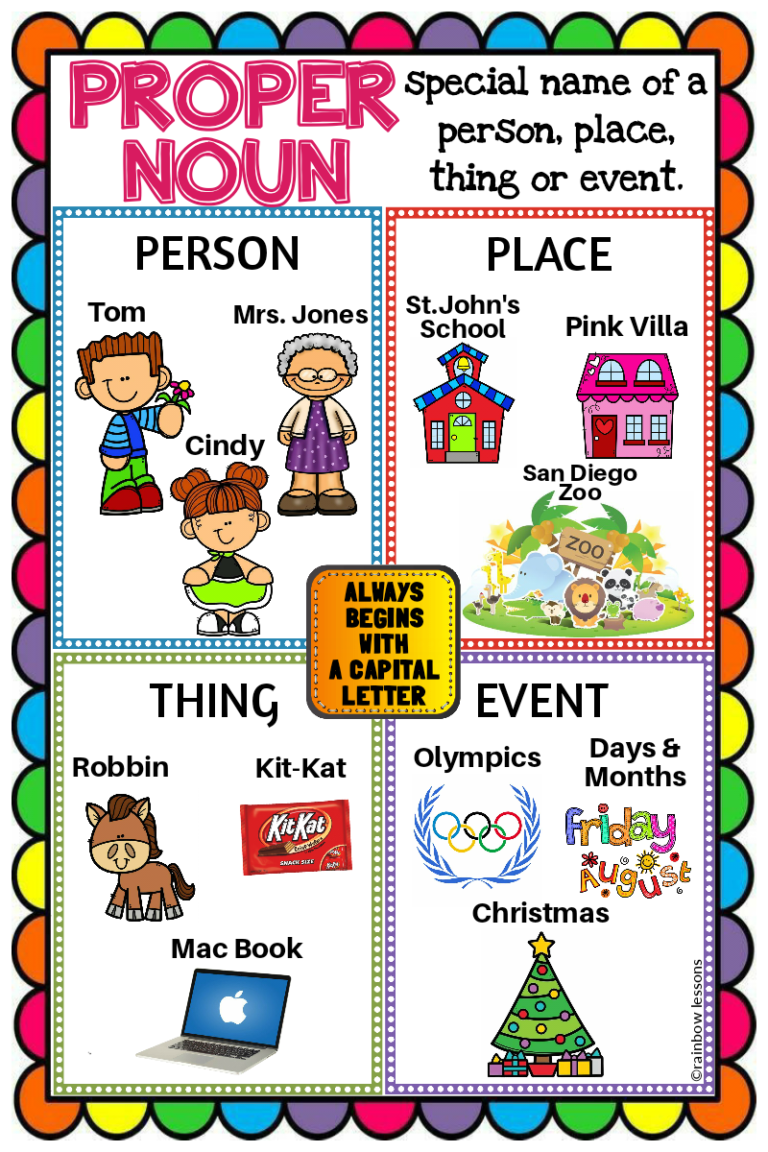
Proper Noun Anchor Chart Proper Noun Poster Made By Teachers
A proper noun is the name given to something (e.g., "Jonathan," "Ollie," "New York," "Monday"). Proper nouns are written with capital letters regardless of where they appear in a sentence. Proper nouns contrast with common nouns, which are the words for things (e.g., "boy," "dog," "city," "day"). Common nouns are written with a capital letter.
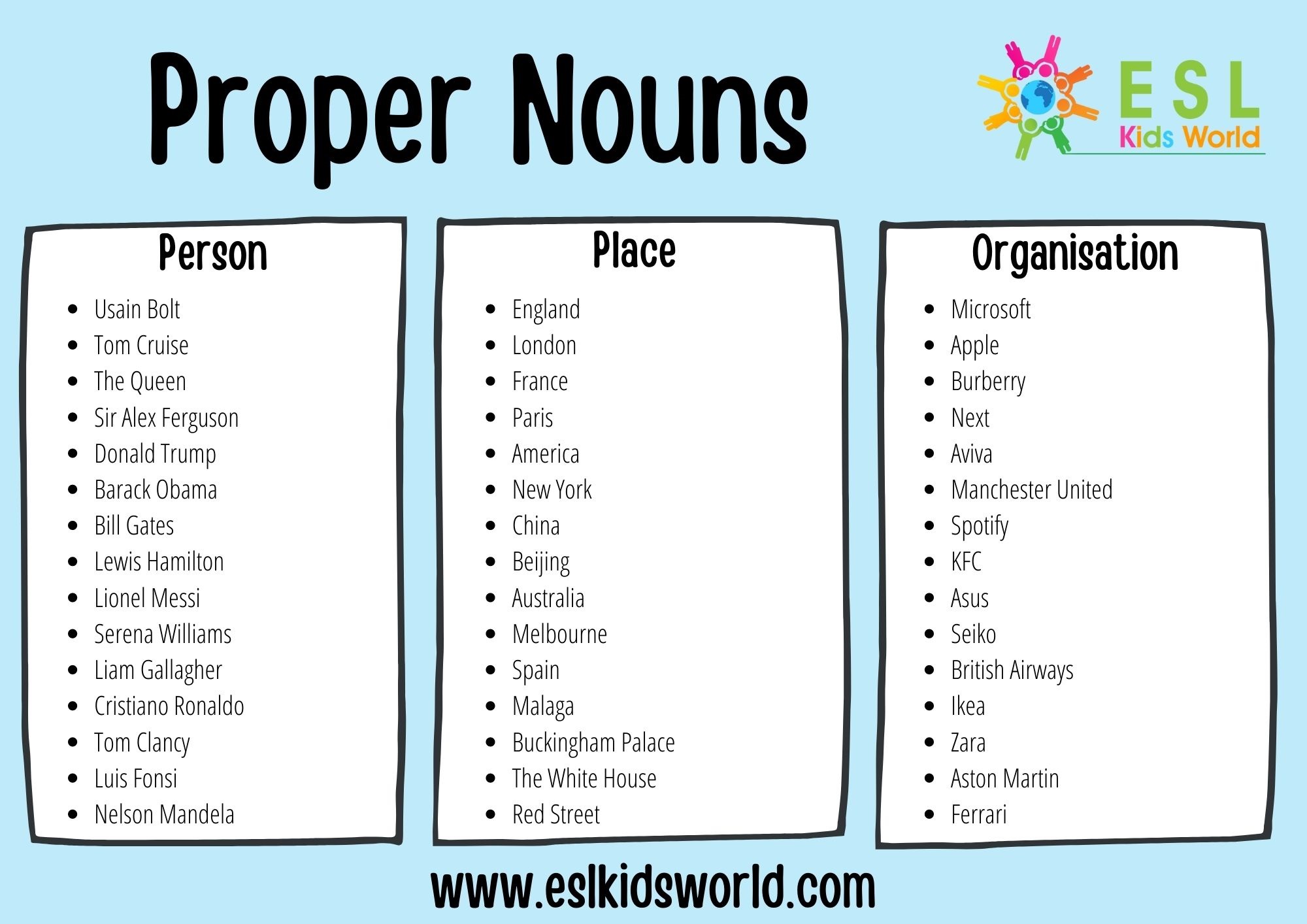
Proper Nouns List What is a Proper Noun? ESL Kids World
The Oxford Learner's Dictionary defines proper nouns as 'a word that is the name of a person, a place, an institution, etc'. According to the Merriam-Webster Dictionary, a proper noun is 'a word or group of words (such as "Noah Webster," "Kentucky," or "U.S. Congress") that is the name of a particular person, place, or thing and that usually begins with a capital letter'.
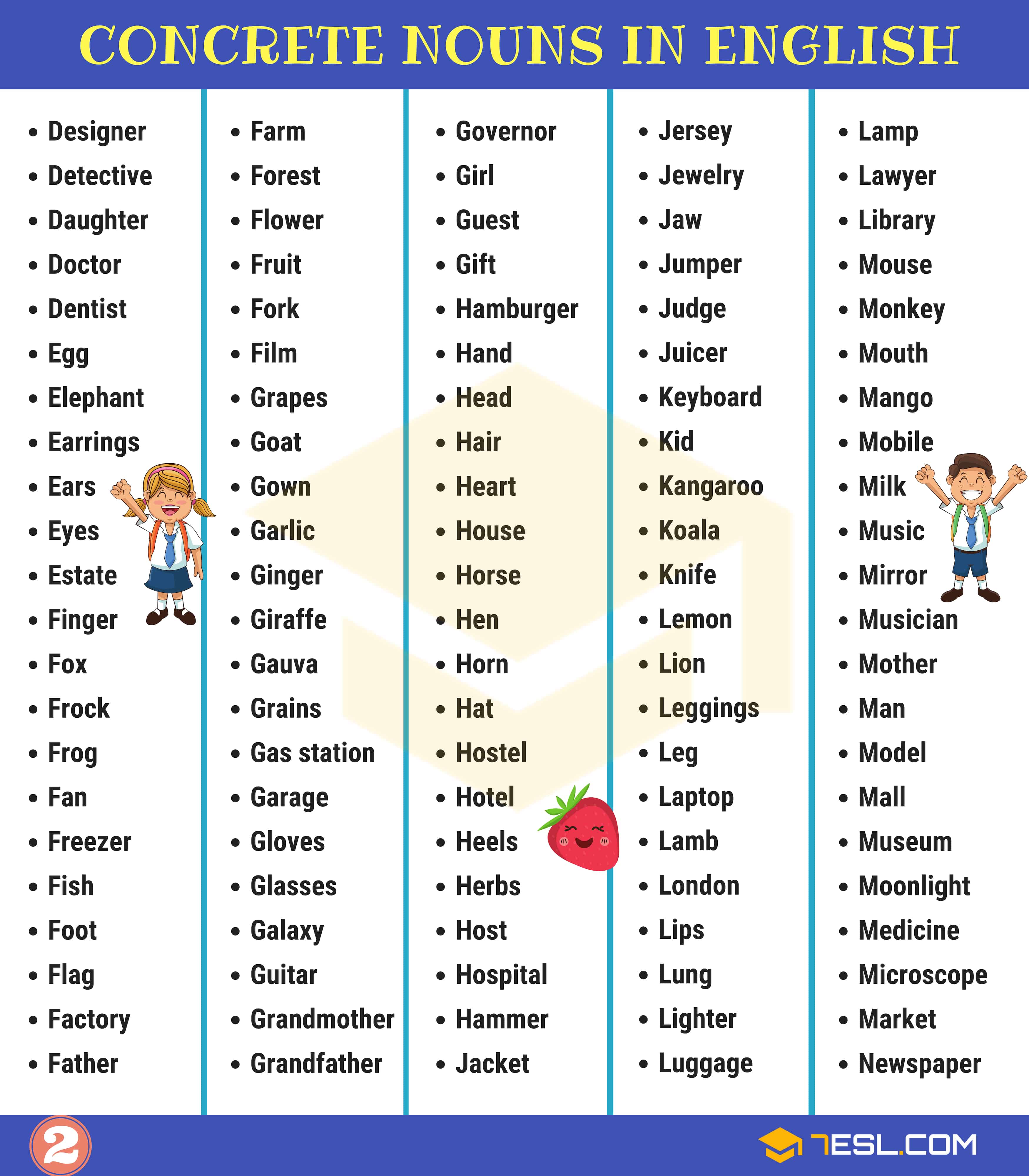
NOUNS What is a Noun? Useful Rules, List & Examples Beauty of the world
Capital Letters with Proper Nouns. RULE: We always use a Capital Letter for the first letter of a name or proper noun. This includes names of people, places, companies, days of the week and months.For example: They like Anthony.(not They like anthony.)I live in England.; She works for Sony.; The last day in January is a Monday.; We saw Titanic in the Odeon Cinema.

Proper Noun Definition, Rules and Examples of Proper Nouns Efortless English
Proper noun examples include: Serena Williams São Paulo Lord of the Rings Proper nouns are the opposite of common nouns, which represent general people, places, or things, but nothing specific. The common noun versions of the proper noun examples above are: athlete city book What ' s the difference between proper nouns and common nouns?

100+ List of Proper Noun in English »
Start writing with Ginger Remember that all nouns are words naming people, animals, places, things, and ideas. Every noun can be further classified as either common or proper. The distinction is very easy to make once you see some examples and come up with a few of your own. Proper Noun Examples
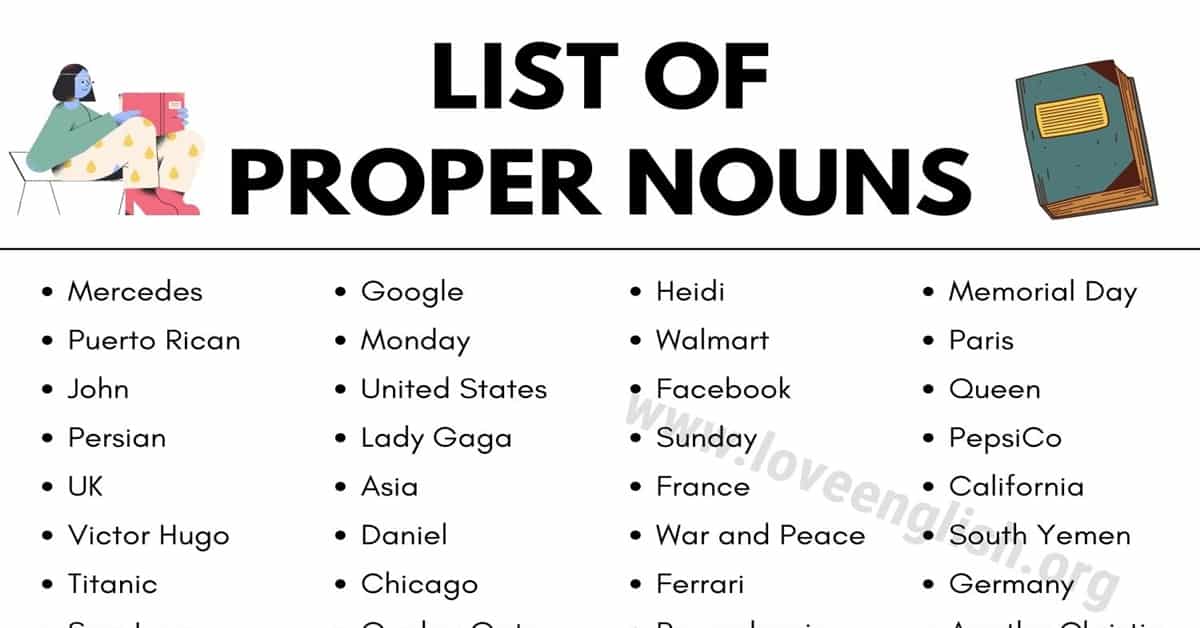
Proper Noun Wonderful List Of 100+ Proper Nouns In English Love English
In some cases, a proper noun can be used as a common noun, indicating that more than one person or thing shares the same name. The proper noun retains its capitalization but might be accompanied by verbiage typically used with common nouns (e.g., it may be pluralized or used with adjectives, articles, or determiners like a common noun would be).

Proper Noun Definition, Examples, List & Sentences in 2021 Good vocabulary words, Proper
Home Knowledge Base Nouns and pronouns What Is a Proper Noun? | Definition & Examples What Is a Proper Noun? | Definition & Examples Published on August 18, 2022 by Jack Caulfield . Revised on January 23, 2023. A proper noun is a noun that serves as the name for a specific place, person, or thing.

Proper Noun (video lessons, examples, explanations)
Nouns are one of the main parts of speech, and can be enhanced by adjectives. Some examples of common nouns are things like table, dog, city, love, movie, ocean, book. A proper noun is a noun that references a specific person, place, thing, animal or idea. Everything around you is a noun, and so learning to identify common and proper nouns is.
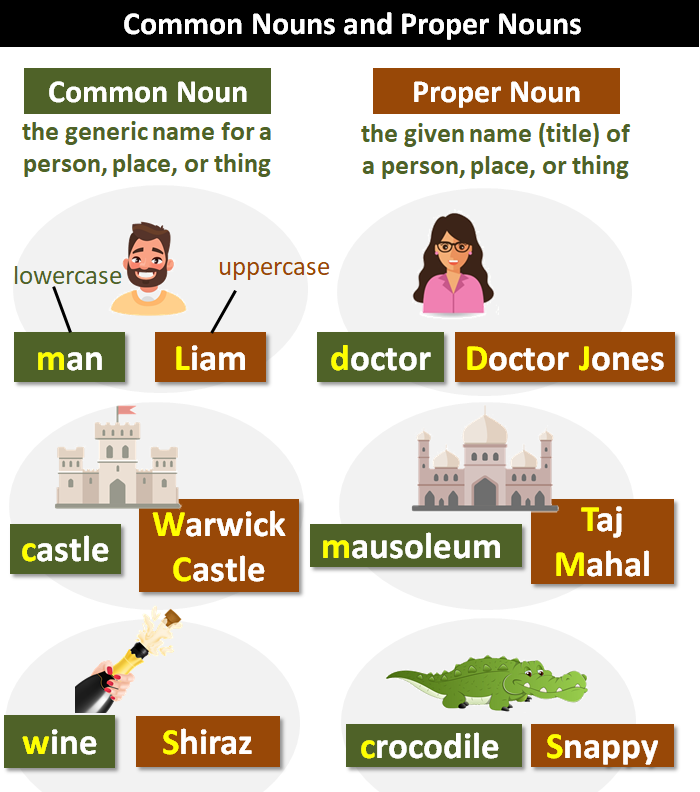
Proper Nouns Explanation and Examples
Proper nouns name specific people, places, things, or ideas. While every proper noun has a corresponding common noun, not every common noun has a corresponding proper noun. Common nouns and proper nouns can do many things in sentences. They can be subjects, objects, predicate nouns, and more. Sentence diagramming is fun and helps us see what.

20 Proper Nouns List Examples English Vocabs
Answers: Proper Noun Example Exercises. Stephen. Easter. Roseville Parade. World War I. The Grapes of Wrath. Paris. Contents [ hide] Define Proper Noun: Learn the definition of proper nouns as a grammatical unit with example sentences & worksheets.

20 examples of proper noun in english English Grammar Here
10 examples of proper noun 1. Human noun: John, Carry, Todd, Jenica, Melissa etc. 2. Institution, establishment, institution, authority, university nouns: Saint John High School, Health Association, British Language Institute, Oxford University, New York Governorship etc. Advertisements 3.

Image result for proper noun Proper nouns, Proper noun examples, Nouns worksheet
What is this proper nouns poster? This handy poster gives many different examples of proper nouns, helping children understand what a proper noun is, and how it's used. This can help with writing, showing children what should be capitalized. Also great for enhancing your classroom and general display! Show more Related Searches

Examples of Proper Nouns (35 Sentences) EnglishGrammarSoft
Examples include England, Santiago, South Street Seaport, and Ebbets Field. 4. Calendar days: In English grammar, months and days of the week are proper nouns, like September and Thursday. Although the months of the year are proper nouns, the seasons are not and are thus not capitalized.
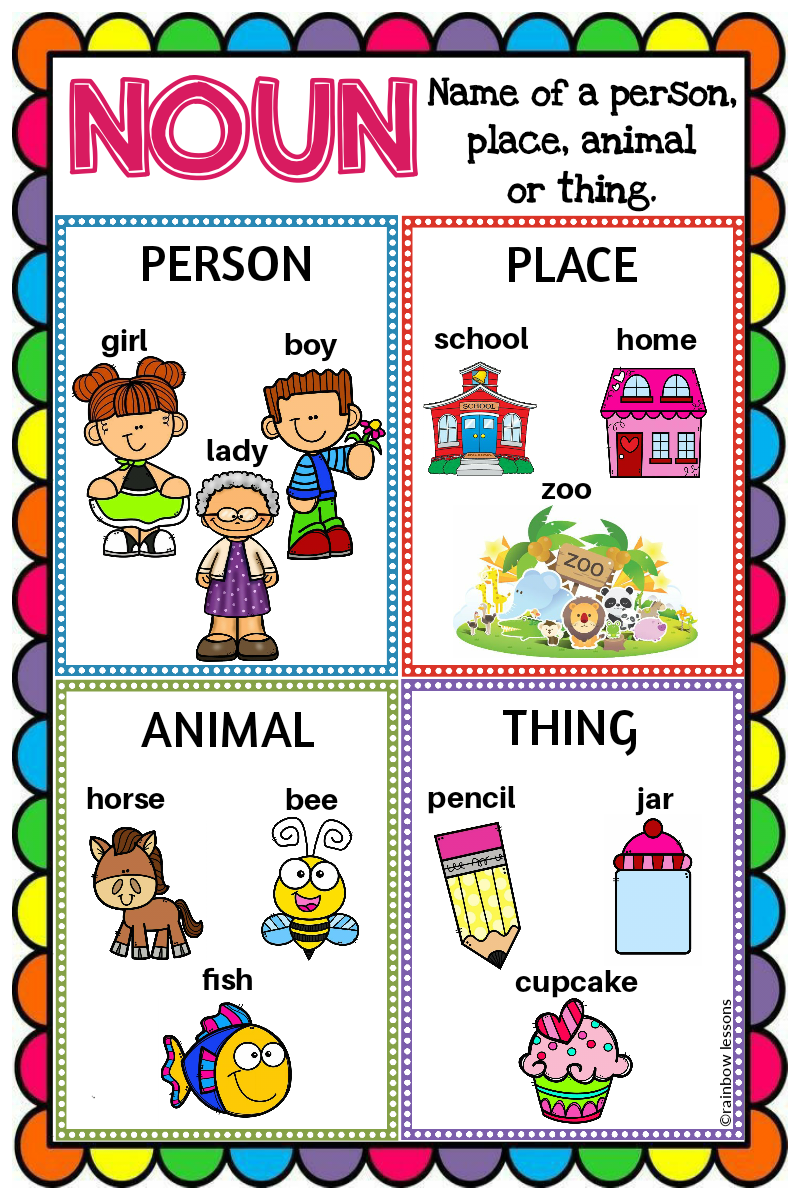
Common and Proper Noun Bundle Made By Teachers
What to Know A proper noun names a particular person, place, or thing. Some proper nouns are: Noah Webster, North America, and The Statue of Liberty. A common noun refers to a person, place, or thing (also to a quality, idea, or action), but it doesn't name it. Some common nouns are: writer, continent, and statue.